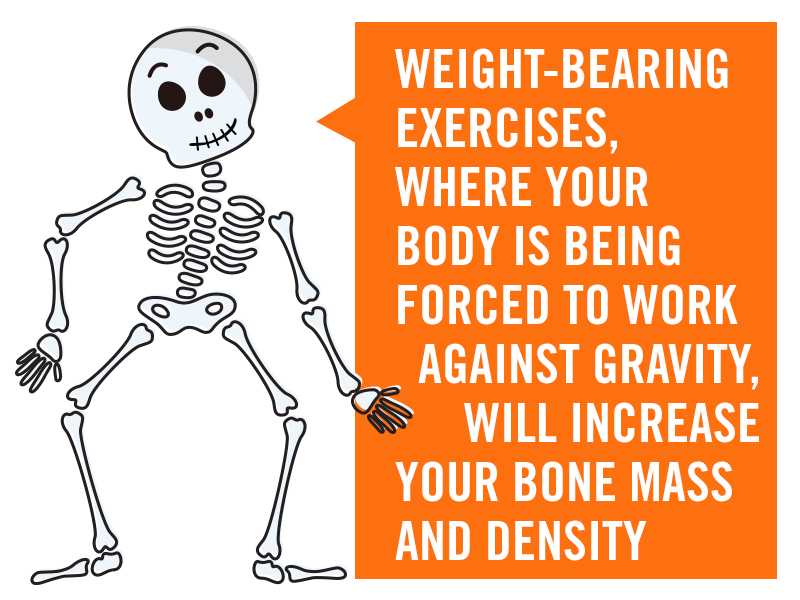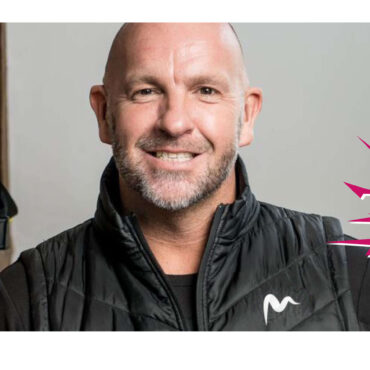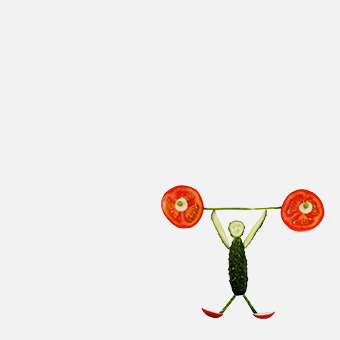Looking after your bones is the best form of investment you can make in your body’s health. It may not seem important in your younger, healthier years, but strengthening your bones and keeping them strong at this stage of your life will benefit you hugely as you get older.
Your leg bone’s connected to your…
It goes without saying that your bones give structure to your body. All 206 bones in the human body are in use during every second of every day, from the biggest (the femur in your thigh) to the smallest (the stapes in your middle ear). Not only do the bones hold you together, but they also act as a way of protection for your organs, and they anchor the muscles in your body as well.
Calcium
The bones are also in charge of storing 99% of the calcium in your body (the other 1% is stored in the blood, muscles and fluid between your cells). As there is more calcium in your body than any other mineral, and we all naturally lose calcium every day (through our skin, hair, sweat and urine) it is important to make sure you are putting calcium back into your system. The daily recommended allowance is 1,000 mg for 19-50 year olds, and 1,200 mg for women over fifty and men over seventy. Signs of a calcium deficiency include numbness or tingling in the extremities or face, and tooth decay. If you are worried that you are deficient, you can talk to your GP about undergoing a blood test.
Vitamin D
But without Vitamin D, your bones are unable to absorb the calcium that enters your body. Vitamin D is also essential building strong bones when you’re young, and protecting them when you’re older.
Risk of rickets
Rickets is a condition that affects the development of the bones, which can produce deformities like bowed legs and spine curvatures, and also pain and discomfort in the bones as well. Mainly forming in children, it is very rare that rickets is genetic, but more likely due to a lack of calcium or vitamin D. Rickets can develop in adults, but this is known as osteomalacia or simply “soft bones”. Luckily, rickets isn’t as common in today’s world as it has been in previous centuries.
Arthritis
Contrary to popular understanding, arthritis can affect people of all ages, including children, and there are in fact 10 million people living in the UK who have the condition. There are two types of arthritis: rheumatoid and osteoarthritis. Rheumatoid, which affects less than 500,000 Brits, is an autoimmune disorder, whereas osteoarthritis, which generally develops later in life, is a condition which affects the cartilage in the joints, causing severe pain and lack of movement in the joints as the bones have less protection, and are made to rub together.
Osteoporosis
As a child, your bones grow very quickly, and recovery time from injury is also much quicker too. Your bones stop growing in your late teens, but the density of your bones increases into your late 20s. At the age of 35, however, your bone mass will start to decrease. Although this is a natural process, too much bone loss can lead to osteoporosis. According to the NHS, osteoporosis affects around 3 million people in the UK, with women being at greater risk than men. You’re also at a high risk if you have a BMI rating of less than 19, or you have another condition such as Crohn’s or coeliac disease. In complete contrast to rickets, osteoporosis was hardly known about one hundred years ago, and has increased as a condition due to our diets and lifestyles in the modern day.
Step back in time
But do not fret; the good news is that exercise can reverse the effects of osteoporosis and ease the pain of arthritis. Any weight-bearing exercise, where your body is being forced to work against gravity, will increase your bone mass and density; this could be as simple as doing steps, and reports have shown that even 100 steps a day will have a positive impact on your bones. No matter your ability level, you can get those steps up by walking, hiking, running or even on the cross trainer.
Get on your dancing shoes
What better way to have fun whilst stepping than to join in at a dance class? Grab your partner or friends and hit the dance floor. Be it Zumba or Rumba, Merengue or the Macarena, every move will help make your bones strong.
Make a racket!
Did you know that over 613,000 people play badminton each week in England alone? Jump on the racket sport bandwagon for a fun, energetic workout that will be great for your bones. The bones in your arms, wrists, shoulders, legs, knees, hips and spine will all be put into movement during a match of any kind. Head to the court for a singles match rather than doubles; you’ll find you’ll get more from your workout as you’ll be even more active.
Take it easy
If you’re looking for a gentler way to strengthen your bones through exercise, why not try one of the following. Although Tai Chi is all about slow, gentle movements, a study published in Physician and Sportsmedicine found that participants resulted from a slowed rate of bone loss. Yoga has also been shown to strengthen your bones in the most vulnerable areas, like your hips and wrists. Golf was once considered a sport left for retirement, but in fact, the combination of carrying clubs, swinging to hit the ball and walking around the course provides both an upper body work out and strengthening to the bones in your lower body too. Please note, however, that if your bones are already in a weakened state, you might like to be cautious about activities that involve lifting heavy weights. Please consult a specialist if you are concerned.
Gain some stability
When our bones aren’t strong, the real danger is the damage that can be done when we suffer a fall. So, as well as working on ways of strengthening your bones, it would be wise, especially to those in their later years, to practise exercises to lower the risk of falling as well. It may sound simple, but focusing on activities and movements that improve your balance and stability will be hugely beneficial to avoid injury.
Enjoy a class on us
Whether your strengthening your bones or improving your balance, you’ll want to check out our latest deal on classes at Active Nation. Through the months of May and June, we’re running their Golden Ticket offer, giving you the opportunity to try out any exercise class for free. To find out more about this, ask in your local gym or follow the link here.
All-round improvement
With your bones strengthened and your balance improved, you will find that not only will you have better ability in your sporting life, but your everyday activities will be improved as well. Whether its work, play, time with family, or time alone, your bones will literally carry you through life, and the stronger they are, the more they are able to support you.
Get more from your minerals
Dairy products are your go-to foods to make you’re getting your daily amount of calcium. Low-fat milk has more calcium than full-fat, with a comparison of 305mg and 290mg retrospectively per cup. Cheese such as gruyere and mozzarella have more calcium than cream, cottage or ricotta cheese, and yoghurt, be it plain, greek or frozen, are all great options for calcium intake.
But what if you can’t eat dairy? Due to cutting out these products from their diets, vegans and those with a lactose intolerance can be at high risk of calcium deficiency, as well as women who are menopausal, pregnant and breastfeeding too. Here are some non-dairy products that are surprisingly high in calcium:
Leafy greens – kale (per 100g) : 14% DRA
These green leaves are also commonly high in Vitamin K, another good mineral to aid bone health. Also look out for spinach and bok choy (a type of Chinese cabbage).
Fish – sardines (per 100g) : 38% DRA
Get your hands on some canned fish to really give your calcium levels a boost. The calcium in fish is found in the bones themselves, and when a fish is canned, the process means that they are soft enough to eat. If you still don’t fancy the sound of eating them, throw some sardines fillets or canned salmon into a blender and whisk them up a delicious paste or dip. You won’t be able to tell they’re there at all.
Soy products – tofu (per 100g) : 35% DRA
All soy products are full of calcium, especially tofu, which is actually made of soybeans that have been ground and boiled. However, soy milk has nowhere near as high calcium levels as cow’s milk (only 61mg per cup), so look out for a variety that as been fortified with extra calcium.
Nuts and seeds – sesame seeds (per tbsp) : 8% DRA
Nuts and seeds are the easiest ingredients to add into practically any meal – just sprinkle them over your vegetables, meats or salad for that extra crunch. A cup of ground almonds also provides 25% of your DRA.
Lifestyle choices
As well as our food choices, there are other lifestyle factors that can cause damage to our bones too. We all know that smoking causes a wide variety of damage to your body, but did you know that your bones could be affected too? Although the tests are complicated, there have been studies that have proven links to those who smoke and the development of osteoporosis. Those who smoke in their younger years in particular will not gain their maximum bone mass, and their skeletons will be smaller than that of a non-smoker. This is the same for drinking excessive amounts of alcohol. See our article on Going Dry to learn more about the guidelines for alcohol intake.
Let the sunshine in
Although there are traces of Vitamin D in some foods, the best way of getting that well-needed mineral in your body is to get out into the open air and let the sun’s rays do their work! With the summer coming up and the weather getting brighter, there’s no better time to get your fill, remembering to keep your skin protected with sunscreen when you do so.
The finishing touches
It’s all very well to make the bones on the inside healthier and stronger, but what about those bones we can see on the outside too? National Smile Month runs from the 16th May – 16th June in the US! All the above tips will provide long lasting benefits to your teeth, but here are five extra tips from the NSM website for a healthy mouth:
1. Clean between your teeth using floss at least once a day
2. Use a toothpaste that contains fluoride to help strengthen tooth enamel
3. Change your toothbrush at least every to or three months
4. Wait an hour before brushing your teeth after eating or drinking, to avoid brushing away particles when the enamel is in a softened state
5. If you have a sweet tooth look out for sugar-free drinks and sweets that contain xylitol, as this contributes to oral health.
6. Visit your dentist and if you have a problem with your wisdom teeth



















